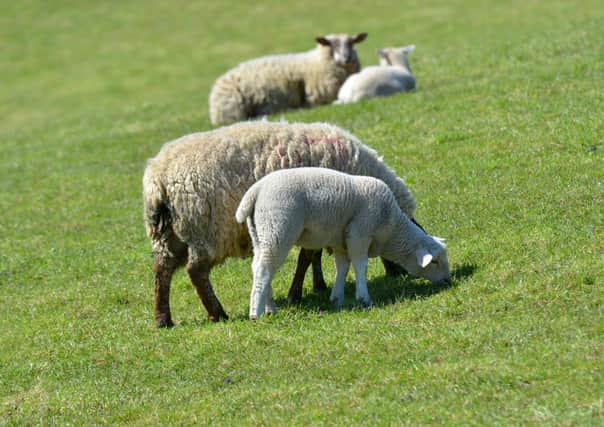AFBI issues Nematodirus warning to sheep farmers prior to lambing


Nematodirus infection results from the ingestion of large numbers of infective worm larvae present on contaminated pasture.
Lambs grazing the same pasture in the previous year were the source of this contamination. For Nematodirus eggs to hatch they must experience a period of cold weather followed by warmer conditions. These conditions are usually achieved during the winter and spring of each year. Nematodirus eggs passed out by lambs in 2019 will generally have remained unhatched on the ground throughout the winter season.
Advertisement
Hide AdAdvertisement
Hide AdGiven suitable conditions of moisture and temperature, they will undergo mass hatching in the spring of 2020, resulting in a high risk of infection for lambs. Affected lambs develop profuse scour and can die rapidly.
Using a forecasting system based on climate data, staff at the Institute have predicted that hatching of Nematodirus eggs has commenced, with 10% hatch happening between March 21-23. The current meteorological readings indicate that peak hatching will take place during the second week of April.
Nematodirus normally only affects lambs between six and 12 weeks of age and clinical signs usually appear two weeks after ingestion of large numbers of larvae.
Although rare, Nematodirus infection can occasionally cause problems in young calves. Therefore, farmers should be on the alert for signs of scour in lambs (and possibly young calves at grass) from mid-April into May.
Advertisement
Hide AdAdvertisement
Hide AdFarmers should be aware that Nematodirus infection might be confused with coccidiosis, another disease which can cause severe scour in young lambs.
As the treatments for Nematodirus infection and coccidiosis are different, accurate diagnosis and treatment recommendation, through your veterinary surgeon, are essential.
Nematodirus disease can be avoided or reduced in lambs by:
* not grazing lambs on the same fields as those grazed by lambs of a similar age last year.
* using anthelmintic drenches every two to four weeks. The interval between doses depends both on the particular anthelmintic used and the severity of infection.
Advertisement
Hide AdAdvertisement
Hide AdTo date, only limited evidence has been found of drug resistance in Nematodirus to any of the available classes of anthelmintic.
Your veterinary surgeon should be consulted at an early stage.
He or she is in an ideal position to provide advice on the prevention and/or treatment strategy best suited to your particular circumstances.